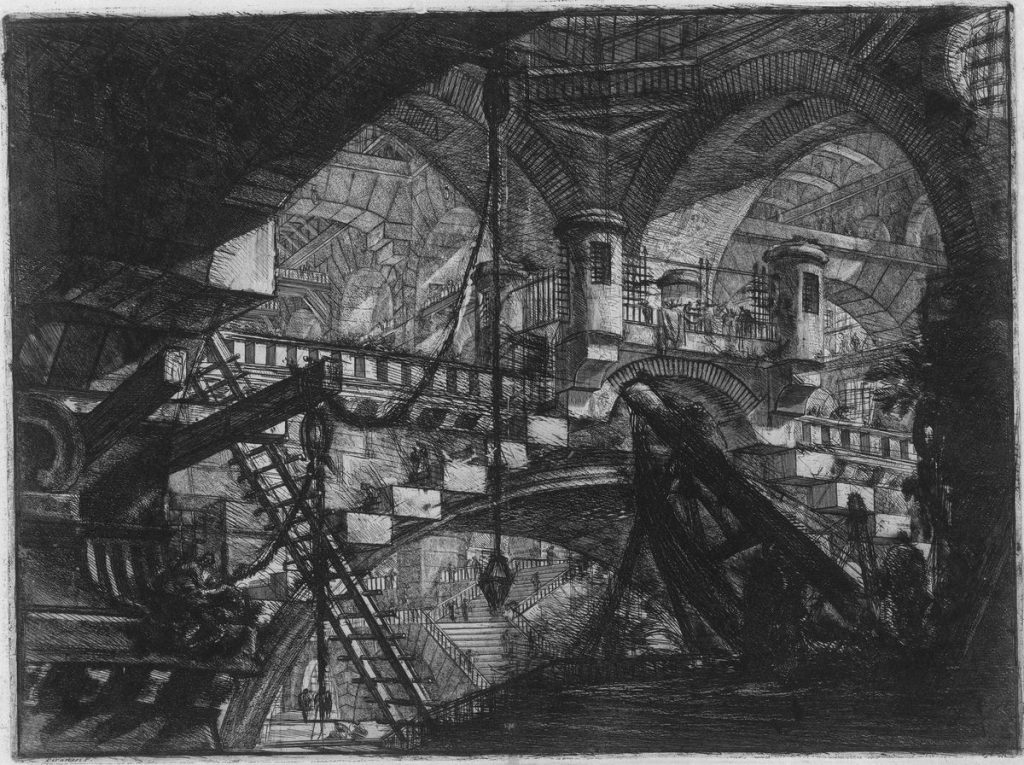Working towards a goal builds up momentum: the closer you get, the more worthwhile your efforts can feel. This momentum can get scattered by reaching a finishing line; instead of stabilizing your work rhythm and thus your artistic identity further (knowledge of progress, of having manifested something), it can lead to parts of your identity crumbling, to be replaced by a vacuum: who are you? Why are you?
The deeper your identification with goals and challenges, the harder their absence can hit you: having had an exhibition opening, having finished a difficult piece, having published a catalog of your work – accomplishments can generate a lack of structure, direction and purpose. A limbo. You accumulated knowledge, skill and will, but then seem to have lost the platform to invest it in.
Processes and goals
Since goals are usually singular, temporary events, it makes sense to rather focus on what accompanies you more permanently: the processes that lead to them. Habitualizing these turn them into your life’s permanent backbone: being in the studio on time, preparing the next work, putting in a certain number of hours every day. Goals can be harnessed for increased productivity and motivation, at the risk of experiencing a motivational low upon their attainment. By analyzing your personal experiences with processes and goals, you can establish a balance that benefits from using both.
Forming habits
The long-term solution here is to establish habits, which can start today: habits are formed by repeating your actions consistently, based on specific triggers: once you finished your cup of tea, you put it in the sink. Once you get out of bed, you make the bed. This works for every part of your life, including your artistic practice: once you brushed your teeth, you get dressed; once you got dressed, you leave for the studio; once you entered the studio, you turn off your phone’s notifications and put it aside; once you disabled your phone, you sit down to work for an hour. The banality of these actions, combined by stacking them together (“habit stacking”), results in a powerful approach to life (and work): since you get used to these sequences, you question them less. Since you question them less, you can focus on your work more efficiently.

Apart from your habits, there are a few further strategies to consider:
- Establish reliable habits: To consistently come up with new ideas is your perpetual reality as an artist: let it become your routine. Instead of defining yourself through your achievements and goals, consider establishing processes that will become habitual – reducing the impact of reaching your goals. Since quality is the consequence of quantity (of the amount of time you invest), this approach can result in your work’s quality to increase as well.
- Work on multiple pieces/projects in parallel: Experiment with working on parallel sets of production processes – with the intention of them not being finished at the same time (if they would, this might exacerbate the whole problem of losing momentum). Note that finishing a piece/project might require you to temporarily focus it exclusively. Experiment with the various ways of working in parallel to find out which work for you (staying within one medium; touching various media but sticking to an overarching topic; working on multiple independent projects or with different collaborators, etc).
- Prepone preproduction: Instead of focussing on projects consecutively, experiment with preponing the preproduction phase of upcoming projects right into your current phase – even if those later projects are utopian and unconfirmed. This lets you think about them without actual pressure, which can be both enriching and empowering; once you do focus on them, you are already somewhat familiar with their parameters. This can result in a more soothing gradient into new domains, which can come in handy once the current project is done.
- Generate a list of potential futures: Establish and maintain a list of potential research areas and future projects. Let this list include both full-blown projects (a work series, a collaboration, a body of work for an exhibition) as well as smaller fragments of investigation (researching specific tools, writing about your work, deepening your understanding about a previously untouched work aesthetic). Let this be your timeline of potential futures: you won’t ever be able to dive into all of them, but having them available in a rough overview will help you see the many areas of potential investigation. This will return agency to you, enabling you to look at these list of utopias, and engage with them.
Setting up process-based work habits will influence your attitude toward goals, and lets you use the best of “both worlds”: the streamlined reliability of habits as your structural backbone, mixed with the short motivational overdrive and bursts of peak performance offered by goals. Used adequately and sensitively, this can minimize your loss of momentum upon reaching goals.